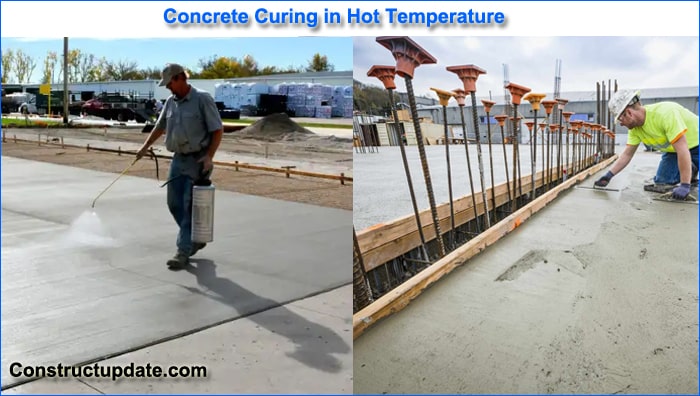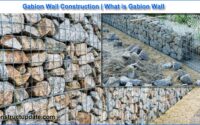Tips to Concrete Curing in Hot Temperature | Concrete Curing in Hot Weather Expert Tips
Curing must begin as soon as your finishing activities are finished, but it is especially important in hot, dry weather. Use a white-tinted curing chemical with plain grey concrete to reflect sunlight. Use white curing blankets, either the single-use or multi-use kind, if you’re using one.
You Should Consider Following for Hot Weather Concreting
Unfavorable site circumstances might affect the quality of concrete when the temperature of freshly mixed concrete reaches around 77 degrees Fahrenheit. The inability to put and finish concrete in a protected environment (enclosed building) and ambient temperatures exceeding 90 degrees Fahrenheit can both make it challenging to produce high-quality concrete.

Some or all of the following measures may be taken as precautions:
- Before pouring, concrete, wet the subgrade, steel reinforcement, and formwork.
- Put up temporary sunshades and windbreaks to cool the concrete’s surface temperatures.
- To lower the initial temperature of the concrete mixture, cool aggregates, and mixing water was added. The temperature of concrete is barely impacted by hot cement.
- Use concrete that can be placed and consolidated quickly.
- To keep the initial moisture in the concrete mixture, cover the concrete surface during placement with plastic sheeting or evaporation retarders.
- As the durations for the initial and final sets were significantly shortened by the hot weather, make sure there is enough manpower available to reduce the time needed to put and finish the concrete.
- To increase relative humidity and meet the ambient air’s moisture demand, you can consider fogging the region above the concrete placement.
- As soon as the concrete finishing procedures are finished, provide suitable curing techniques.
- Consider changing the timing of concrete laying to take advantage of cooler temperatures in harsh weather, such as the early morning or late at night.
- At temperatures of 95 degrees Fahrenheit or above, concrete can be properly put and finished to produce high-quality durable concrete with the right planning and execution.
Setting up Time of Concrete in Hot Weather
Because of the shortened time required to place, consolidate, and finish concrete, the increased risk of plastic shrinkage cracking, thermal cracking, and cold joints, the potential for strength loss due to high water demand and high curing temperatures, the challenge of controlling air content, and the increased urgency for concrete projects, the impact of high ambient temperatures and high-temperature concrete component materials on the setting time of concrete mixtures is a topic of concern.
Temperature, relative humidity, and wind speed are three crucial factors that affect how quickly the concrete dries. As a result, concrete will dry quickly on a hot, windy day, which is why curing is crucial.
The goal is to either stop the water from evaporating or add enough water to make up for the evaporation as most concrete has plenty of water when it is laid. Evaporation can be avoided by using curing blankets, plastic sheeting, or curing substances that create membranes and are sprayed on. When evaporation is not excessively high, curing substances can be a reasonable amount of use.
However, water curing is the superior method for curing concrete. On the surface, water may puddle, spray, or mist. Many concrete contractors use burlap to absorb the water and keep the surface moist. Temperature and the mix will determine how long to keep it wet; you want it to have developed enough strength on the surface. With Type I cement, 7 days is typically enough—less in warm weather.




